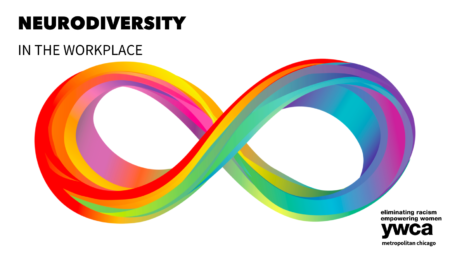Accommodating Neurodiversity in the Workplace
This week for #DisabilityPride, our Inclusion Chicago team is highlighting some ways that we can support neurodiversity in our workplaces. Judy Singer, a sociologist with autism, coined the term “neurodiversity” in the 1990s to reframe our understanding of brain function in terms of differences, not deficits. Neurodiversity is the simple fact that the human brain works in many different ways, which means there is a wide spectrum for how people naturally process information and interact with the world. Historically, some of these differences in brain function have been pathologized and treated as inferior. The concept of neurodiversity aims to rectify those injustices by reminding us that those differences are natural and normal: there is no one “correct” way for brains (and therefore people) to function. Even more, we should value neurological diversity as an important and beneficial part of the richness of human life. Centering neurodiversity enables us to recognize and celebrate the unique strengths of people who think and perceive in different ways.

Neurodivergent people include those with a wide range of conditions that shape thinking, learning, and perceiving the world—such as autism, ADHD, dyslexia, schizophrenia, and bipolar disorder (just to name a few). For some people, neurodivergence can limit their ability to perform daily activities and is therefore associated with disability. This is not true for all neurodivergent people, and whether a neurodivergent person identifies as disabled is therefore an individual and sometimes personal question. Some neurodivergent people may identify as having an invisible disability—a mental or neurological condition that can limit their movements, senses, or activities, even if that condition is not visible to others. Research suggests that 15-20% of the U.S. population is neurodivergent. Despite this high percentage, most of our workplaces are configured—physically and culturally—for neurotypical people whose brains and nervous system function “typically.” Something a neurotypical person never notices could drastically impact their neurodivergent colleague’s ability to embody their full potential at work. For instance, certain fonts are more difficult for dyslexic people to read, many people with ADHD find it difficult to concentrate for long periods without breaks as traditional work schedules require, and many neurodivergent people reach sensory overload when surrounded by noise, bright lights, or strong smells. These barriers are environmental. In other words, it’s not the fact that a neurodivergent person’s brain functions differently that can make it difficult to achieve to their full potential. The real problem is that the work environment has been artificially designed without their natural, normal, and commonplace needs in mind. The good news is that these barriers are unnecessary and often easy to remove or mitigate. Organizations can commit to using dyslexia-friendly fonts. Where feasible, managers can offer employees the choice of more frequent but shorter breaks. Office layouts can include quiet rooms, and noise-cancelling headphones can be made available to employees with sensitivity to sound. It’s important for managers to take responsibility for discussing barriers and requirements on an individual basis. These conversations build trust and ensure that neurodivergent colleagues have the support they need and deserve. Organizations should strive to be open and transparent about accommodation requests throughout the hiring and onboarding processes, proactively sharing information so the onus does not fall on people afraid to disclose their neurodivergence or disability because of negative stigma. There are other ways to make our workplaces more inclusive by embracing neurodiversity. One important option is to push back against stigma and lack of awareness through education about ableism. Ableism means discrimination of and/or prejudice against people with disabilities and bias towards able-bodied people based on the harmful assumption that people with disabilities are inferior and should be fixed. Ableism shows up in our workplaces in subtle but nefarious ways, including in commonplace sentiments like:
- “I wish he’d quit already, he’s crazy.”
- “I’m OCD about keeping my work area organized.”
- “That meeting was frustrating; it’s like the blind leading the blind.”
- “My boss never listens to me. All my good ideas fall on deaf ears.”
- “The CEO is happy today! She must’ve changed her meds.”
- “I don’t even think of you as disabled, you’re just normal to me.”
- “Ugh I had to park so far away today, there are way too many handicapped spots in the lot.”
Access Living, a Chicago-based nonprofit supporting and advocating for people with disabilities, explains that remarks like this can be deeply painful because they “imply that a disability makes a person less than, and that a disability is bad, negative, a problem to be fixed, rather than a normal, inevitable part of the human experience.” This idea—that difference doesn’t mean deficit, and that diversity in brain and body is not just normal but worth celebrating—is the beating heart of #DisabilityPrideMonth. Want to learn more?
- “Neurodiversity in the Workplace” (Employer Assistance and Resource Network on Disability Inclusion)
- “Ableism 101” (Access Living)
- “Why People Hide Their Disabilities at Work” (Harvard Business Review)
- “How to Make Workplaces More Inclusive for People with Invisible Disabilities” (Harvard Business Review)
Need one-on-one assistance in navigating the application process as a prospective, neurodiverse employee? Our Career Services team is here to help. Reach out today at jobs@ywcachicago.org!
